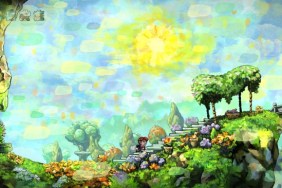Jonathan Blow and Rand Miller are arguably two of gaming’s most brilliant minds, one having created The Witness, a highly lauded puzzle adventure, and the other bringing Myst into the world, a clever puzzle adventure that drove adoption of the CD-ROM format in 1993. In a fascinating twist on the traditional developer interview, the PlayStation Blog brought together these two intellectuals to talk about puzzle game development as Rand Miller’s latest title, Obduction PS4 with PSVR support, releases next week.
Blow begins by asking Miller about the advancement of technology since Myst released in almost 25 years ago, and having to change how developers force player perspective with full locomotion 3D games. Miller explains the difficulty.
“The nature of exploration/adventure games is that you want the player to feel like they have complete freedom, but at the same time provide some kind of path guidance that insures that the player gets the story/information they need. I think we’ve learned as we’ve transitioned to realtime 3D that the path guidance that we might have previously achieved on a “per frame” basis, we now have to do on a different scale.”
Miller then goes on to talk about specific examples from Riven, a frame-by-frame game, versus how he handled drawing the player’s attention in Obduction, which is both fully 3D and in VR. In regards to VR, he likens drawing the focus of the player to keeping the attention of a three year old, because the ability and desire to look around is so natural and effortless.
Later in the discussion, Miller asks about the frustration of watching early players try to solve puzzles. Blow reveals that The Witness did not have early testers, and the first time people really got to go hands on with it was at PSX 2015, after the game was largely done being designed. Obduction’s creator then went on to talk about how he solved puzzle problems subtly.
“The subtle clue solutions are the most fun for me – just a little tweak that has the perfect psychological effect – a flash of light on the other side of the world, a small 440 volt sign, a license plate on a desk, using consistent colors, etc. I love when those work to fix little issues, and even if they don’t work for everyone, they make the experience more about paying attention then just trying to get into our (the designers’) heads.”
They go on to discuss core mechanics of the puzzle games, and how they each go about intersecting those core mechanics with story and environment to create an intelligent puzzle game that feels engaging to the player.
The discussion is quite interesting, so I recommend you read the whole thing over at the PlayStation Blog. You can also read our Rand Miller interview from PSX 2016 where we talked about what it’s like to be involved in three decades of advancements to video game technology.
Obduction PS4 releases on August 29th with PSVR support.








